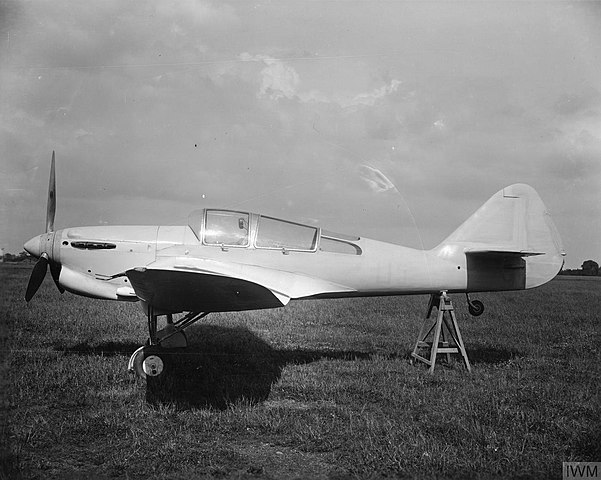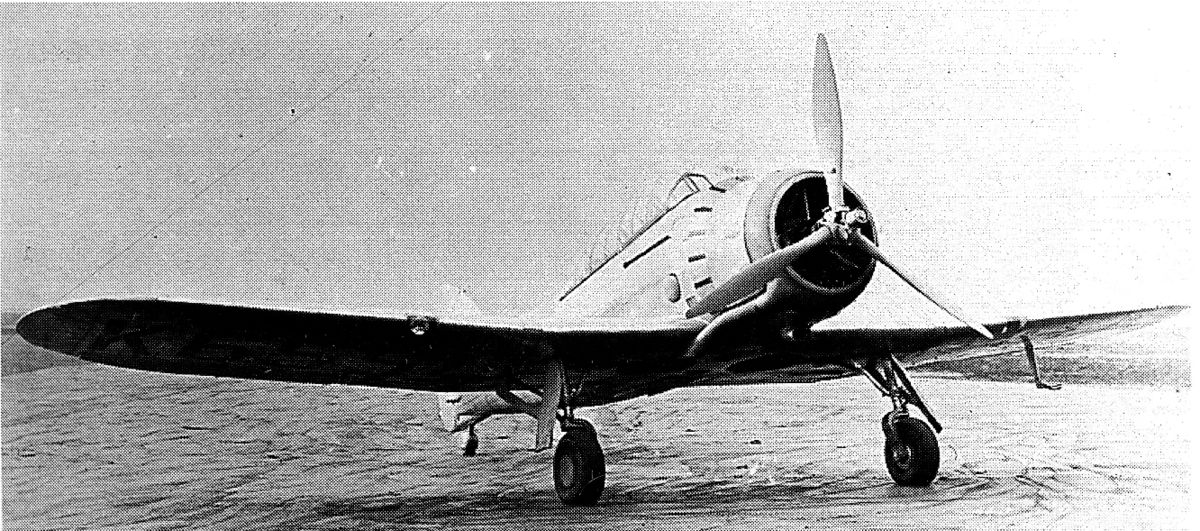I'm going to try making a stab at doing this, without too much poring over books! should have tried before, but better late than never!
Where to start!? Well lets say that at the 1935 Hendon Air Show, - airframe & engine makers are gathered together, are given a 'pep' talk by senior RAF officers - 'Gentleman the times they are a changing. In the past you fought each other to get small orders, I'm here to tell you that in future orders will be substantial, you may not be able to cope, we will require others to assist.
Fighters:
The start of 'modern' fighters started with F.5/34 - modern in that it was an eight gun monoplane. Yet, AFAIR a 'colonial' aircraft - suitable for rough strips etc. hence the majority of designs were with radials.
Here Glosters got a team together who concentrated on the new fighter, with the new fighter taking to the skies in January 1936. The aircraft handled well, The RAF ordered a few hundred (while reducing orders for the Gladiator), when it appeared at the 1936 Hendon air show - the international response was similar - especially where countries had an interest in license production of Bristol engines e.g. Finland, Poland, and (I think Norway). Also, when the Mission from Australia did they worldwide tour, it was of great interest to them.
The RAF OTOH seeing the potential of the Merlin, OTOH aware of some of the teething problems sought a more powerful engine for the Gloster twin, Bristol assured them that the Mercury will get better, if not they will be the Taurus, while Alvis proposed the Pelides Major which piqued their interest. To help them with capacity, they encouraged a link up with Napier (who had been struggling for orders).
Later the RAF seeing the need for a more powerful armament, hence spec. F.37/35 for a 4 x 20 cannon armed fighter. Both Hawker & Supermarine, were excluded so as not divert attention from their main design. Prototypes were ordered two from Bolton-Paul (s/s & s/e), Westland & Supermarine (both s/s & twin/e) - the Treasury authorised three (otl only Westland). Earlier in the process as a back up, the Ministry asked Gloster to supply adapt their turret fight fighter design, to just f/ward 2 x 20mm cannon & 4 x 0.303" MGs with Mercurys rather than Aquilas.
The B-P Vulture powered prototype took to the air first, not a success, crashed - cause found to be engine problems - caused the AM to lose faith in the engine. The Hercules version was delayed due h.p. of the engine, finally took to the skies in late summer of '38, handled well but underpowered! Bristol tried to reassure the AM that the 1500 version would soon be available, but the AM returned to Alvis - this time for their Alcides Major giving 1650/1725 h.p. - once these became available to fit into the waiting airframes.
The aircraft served the RAF well until replaced by the Centaurus powered Hawker Tornado.
Meanwhile, the Gloster twin was a success, negating the need for a Blenheim 'fighter' (though some of the early bombers were converted to act as NF trainers). and space was found behind the pilot for a radar operator - they were earlier and faster than the later Beaufighter, making an impact during the Blitz. Yet, earlier Trafford Leigh-Mallory noticed one while on a visit to Gloster and said 'can it carry bombs?'
Bombers
When spec's B.12/36 & P.13/36 were issued it was noticed the overlap with an earlier spec. of B.1/35 hence all the makers pulled out, to contrate on the later designs. Rumours of the problems with the Vulture meant that no designs included those engines. For the B.12/35 spec. the Boulton-Paul & and the Vickers designs were accepted. Shorts were thought to be too busy on their flying boats - the 'C' class Sunderland, and the longer range 'G' Class ('Atlantic gap' just a figment of some AH dreams).
With the Halifax & Manchester (4 Merlins) were for the P.13/35 spec. However, after financial restrictions delayed the four engined heavy bomber orders, the AM threw their own 'curve ball - an ordered the Bristol design powered by two-Hercules engines at 80' the smallest of the designs. It complemented the Wellington, and because of the spec could carry two torpedoes. As production grew other aircraft were fazed out - Blenheim, Hampden, and CC Anson.
This is to be continued


